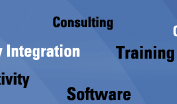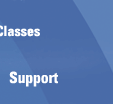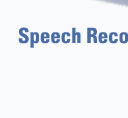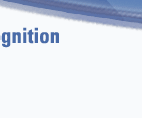 |
 |
 |
 |
 |
|||
 |
 |
 |
 |
||
 |
 |
 |
 |
||
|
|
||
|
||
|
|
Live Instructor, Group
Classes
on Dragon NaturallySpeaking are scheduled several times a month. These
classes provide a convenient and economical way to get started right
with Dragon NaturallySpeaking -- right on your own computer from home
or office! The Basic series of classes cover the most common
problems that frustrate new users as well as productivity "Tricks and
Techniques" based on thousands of hours of end user training. The
Basic series will make sure that you get the best return from your
NaturallySpeaking investment with the minimum amount time and effort. |
|
| Live Instructor Group Classes: Basic Series | |
|
The Basic Series includes
three live instructor classes covering different aspects of "Getting
Started Right" with Dragon NaturallySpeaking. Each class is one
hour long with followed by a live Q&A session. Take one, two or
all three classes in any order although we recommend taking the Getting Started Right class first.
Basics Part 1:
Getting Started Right: This class provides a quick introduction to Dragon NaturallySpeaking, its capabilities and limitations. The class focuses on the core skills needed for successful dictation. To make sure that your software is running properly, solutions are provided for some of the more common problems encountered during voice profile creation and initial usage. The class is presented by an experienced instructor with a question and answer session at the conclusion of the class. Completing
This calss should allow the user to successfully create a voice profile,
identify if there are any problems with the system and to use
NaturallySpeaking to accomplish the basic tasks necessary for
successful dictation including: dictation strategies, corrections,
revisions, document navigation, capitalization and numbers.
Basics Part
2: Increasing Accuracy and Dealing with Problem Words: This class introduces more advanced topics for increasing accuracy. Correction and Revision Strategies are discussed to optimize NaturallySpeaking and to promote higher productivity rates. Strategies are provided to address problem words and to increase accuracy with acronyms, and commonly used phrases. This is the class that helps to increase accuracy and resolve most annoying dictation problems you may have encountered. Basics Part 3: Increasing Productivity This class introduces more advanced topics for increasing productivity. The Command Browser is discussed as a tool for identifying commands and for creating and maintaining custom productivity commands. Several command 'Tricks and Techniques' will be discussed such as creating specialized commands to switch between programs that do not work with the normal "Switch" commands as well as single commands with multiple variations. |
|
|
NaturallySpeaking Basics Package: $89.00 |
|
|
Need
Help?
Toll Free 1-888-548-8255 (TALK) Local
(916) 966-8313 Email
Contact Form |

|
Save
over 20%
Register
for All 3
Classes To Register for individual classes: Register for Part 1 only Register for Part 2 only Register for Part 3 only |
| Group Classes: Calendar |
|
Classes
are available on the first Tuesday and on the Third Thursday of each month. Group
Classes,
$39.00 each. To purchase
individual classes, the 3-class package, microphones or other items
from our shopping cart, click
on the
appropriate link on the left. Save over 20%, register for all three classes for $89.00 |
|
Need
Help?
Toll Free 1-888-548-8255 (TALK) Local
(916) 966-8313 Email
Contact Form |
 |
Copyright ©2006-08. EXAQ, Inc. All rights reserved.










